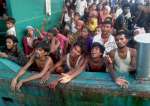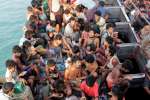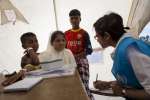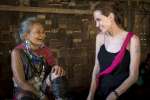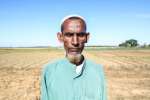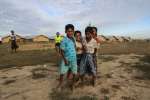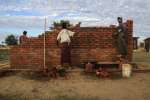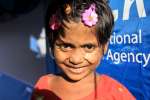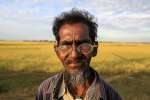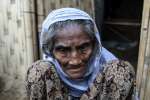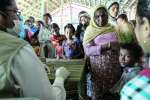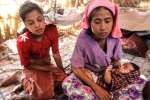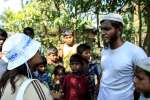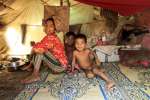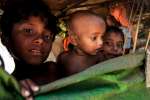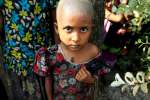- Text size
 |
|  |
|  |
| 
- Français
Some 200 people brought ashore in Myanmar
Briefing Notes, 22 May 2015
This is a summary of what was said by UNHCR spokesperson Adrian Edwards – to whom quoted text may be attributed – at the press briefing, on 22 May 2015, at the Palais des Nations in Geneva.
UNHCR welcomes the landing today of more than 200 people who had been stranded at sea off the coast of Rakhine State, Myanmar. Following their disembarkation, they were taken to a reception centre in southern Maungdaw where they are receiving immediate assistance.
UNHCR has set up the reception centre in collaboration with local authorities. We are working closely with partners to assist the Myanmar Government in ensuring that the needs of people – including water, food, medical assistance and protection – are met.
It's estimated that up to 2,000 people are still stranded on boats in the Bay of Bengal, and a further 1,500 further to the south in the Andaman Sea area. We hope that this recent positive development will be followed by other disembarkations in Myanmar and across the region. This needs to happen before the coming monsoon rains. As we have previously emphasized, the priority is to save lives by getting people safely off these boats as soon as possible.
Since Wednesday's announcement that Indonesia, Malaysia and Thailand would work together to assist people in distress at sea, UNHCR has been talking to governments about support we can provide. We have shared recommendations on the way forward, which include meeting emergency humanitarian needs and jointly finding medium-to-longer term solutions.
UNHCR has already beefed up its response in Indonesia's Aceh and North Sumatra provinces, where most of the rescues have taken place. More than 1,800 Rohingya and Bangladeshis have arrived since May 10 and UNHCR has deployed staff from Bangkok, Jakarta, Medan and Kupang to assess their protection needs. So far our teams have registered close to 600 Rohingya asylum-seekers at two sites.
Out of the more than 300 Rohingya registered at the Kuala Cangkoi site in Aceh province, half are unaccompanied children. UNHCR has conducted a rapid assessment of their needs and is working to trace their families in Myanmar, Bangladesh and Malaysia. Our team has also conducted an awareness session on gender-based violence for designated community leaders.
More than 400 people who were rescued on Wednesday off the green boat that was featured prominently in the media, are now at a site in Bayeun, Aceh. UNHCR is setting up protection mechanisms and mapping partners' activities and will start registering asylum-seekers shortly.
In Malaysia – where over 1,100 people have arrived since May 10 – UNHCR has offered its assistance to the Malaysian authorities and is awaiting a response.
In southern Thailand our team is distributing relief items to recent boat arrivals and people found after their jungle camps were abandoned by smugglers. We continue to interview and counsel these Rohingya men, women and children to identify their needs, trace family links and seek longer-term solutions.
For more information on this topic, please contact:
- In Bangkok, Vivian Tan on mobile +66 818 270 280
- In Yangon, Kasita Rochanakorn on mobile +95 94 48 02 78 92
- In Malaysia, Yante Ismail on mobile +601 3 352 6286
- In Indonesia, Mitra Salima Suryono on mobile +62 818 157 962
- In Geneva, Adrian Edwards on mobile +41 79 557 9120
- In Geneva, Babar Baloch on mobile +41 79 557 9106

